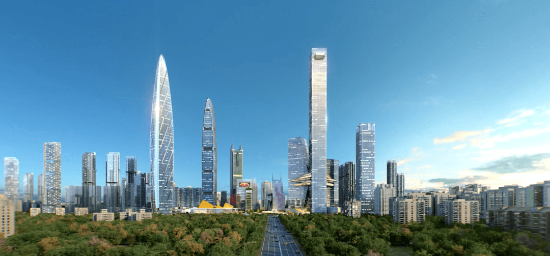Luohu takes on a new look in five years
 0 Comment(s)
0 Comment(s) Print
Print E-mail China.org.cn, September 8, 2020
E-mail China.org.cn, September 8, 2020
During an inspection in July 2015, Ma Xingrui, then secretary of the CPC Shenzhen Committee and incumbent provincial governor of Guangdong, suggested that Luohu district should break its "space bottleneck" with a wave of urban renovation.
On August 29 the same year, the program was officially launched, and the first district-level regulation on urban renovation was later issued.
In June 2016, six major renovation projects started operation.
In October 2016, Luohu's urban renovation mode was evaluated as fruitful and effective and was promoted across the city.
In February 2017, Luohu established "a whole map" supporting system to improve its decision-making capacity.
In March 2017, another six major renovation projects were launched.
In December 2018, the amended regulation on urban renovation took effect.

To ensure transparency, Luohu launched a corruption prevention system this April, strengthening its supervision over the approval and advancement of renovation projects.
In May, the Luohu district government inked a cooperation agreement with the city's bureau of natural resources, aiming to explore new mechanisms and new modes for urban planning and natural resources management.
It is reported that about 107.7 hectares of land supply and 7.83 million square meters of industrial space have been released via forty projects that are underway.
Over the last five years, the district has built 10 primary and middle schools, 19 kindergartens, and 5,682 government-subsidized apartments. About 83 municipal roads, 18 bus terminals, and nine substations have been added to its map. In addition, Luohu has guaranteed the smooth construction of the Chunfeng Tunnel, four subways, and two high-speed railways passing through the district.
Since 2016, Luohu has seen about 72 billion yuan of fixed asset investment in urban renovation, with its land revenue ranking first in the city for consecutive years.
To make Luohu more livable, the district government has started pollution treatment measures and renovation along the Bijiashan River, Buji River, and Qingshui River. Cultural sites, such as Sungang Art Exhibition Center, have been built. Dongmen Street and Yumin Village have also become the district's cultural brands.
Drafting a new urban layout, Luohu has concentrated on building the headquarters economic corridor, forging an international consumption service center, creating an ecological leisure area with a profound cultural atmosphere, and developing the Shenzhen-Hong Kong Port Economic Belt, the Dawutong Emerging Industrial Belt, and the Hongling Emerging Financial Belt.
In each of these four areas – Caiwuwei-Hubei Shennan Headquarters Economic Corridor, Sungang-Qingshuihe Key Area, Shenzhen-Hong Kong Port Economic Belt, and Bijiashan River bank area, a promise of a hundred billion yuan of economic output is being nourished.
Taking advantage of the national plans of building the Guangdong-Hong Kong-Macao Greater Bay Area and building Shenzhen into the pilot demonstration zone for socialism with Chinese characteristics, Luohu is gearing up to improve its carrying capacity and exploring a sustainable model of urban renovation.
As the city marks the 40th anniversary of the establishment of the Shenzhen Special Economic Zone (SEZ), Luohu is set to continue its high-quality development and become more vibrant through urban renovation.






Go to Forum >>0 Comment(s)